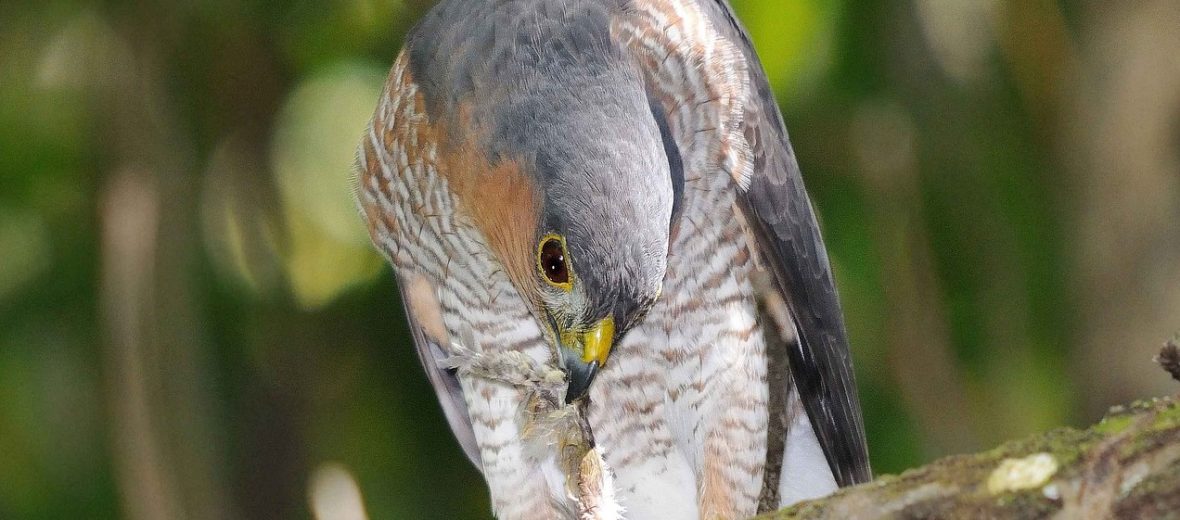
The sharp-shinned hawk is found throughout Canada, United States, Mexico, the Caribbean Islands, Central America, and South America. These birds of prey tolerate a wide range of habitats, from shrublands, thickets, agricultural regions, suburban habitats, conifer forests, deciduous forests, to broad-leaved forests. Due to their increasing numbers and broad distribution, these raptors are listed as Least Concern by the IUCN. The only main threats they face are those of deforestation, habitat loss, and accidental poisoning.
First the Stats…
Scientific name: Accipiter striatus
Weight: Up to 7.7 ounces
Length: Up to 15 inches
Wingspan: Up to 2.2 feet
Lifespan: Up to 13 years
Now on to the Facts!
1.) These birds are diurnal (active during the day).
2.) While generally solitary, or found in pairs, these critters can sometimes be seen migrating in larger groups.
3.) A group of hawks is called a boil, cast, aerie, kettle, or lease.
4.) They have a rather dangerous method of hunting for prey. These birds tend to rapidly fly through thick vegetation and sneak up to & surprise their prey while on the wing (in flight). This can sometimes be dangerous to the hawk, as injuries can and do occur.
5.) Smart and clever as they are, these critters will often pay a visit to backyard bird feeders in order to pick off unsuspecting prey birds.
But wait, there’s more on the sharp-shinned hawk!
6.) Prey birds are plucked of their feathers before being consumed.
7.) Finches, sparrows, tits, wood-warblers, wrens, nuthatches, icterids, and thrushes, to name a few, are all on the menu. Mice, rats, lizards, frogs, snakes, larger insects, and sometimes even bats are also occasionally preyed upon as well.
Did you know…?
Sharp-shinned hawks can fly upwards of 60 mph!
8.) Nesting in pairs, these birds are monogamous (mate for life).
9.) Nests are reused, each year, until the nest becomes unusable. Then a new nest is built from sticks and twigs, then lined with bark chips.
10.) Females lay up to 8 eggs that hatch in up to 30 days.
But wait, there’s still more on the sharp-shinned hawk!
11.) Chicks are born altricial (blind and helpless). They’re brooded by the female while the male guards and patrols the area for predators. The male also captures prey and feeds the female and she, in turn, feeds their young.
12.) Golden eagles, northern goshawks, Cooper’s hawks, and peregrine falcons all prey on sharp-shinned hawks.
Did you know…?
Due to their beautiful and colorful markings, the eggs of these hawks are prized by egg collectors.
13.) The smallest hawks in Canada and the United States are male sharp-shinned hawks.
14.) There are approximately 700,000 wild individuals existing to date.
15.) Due to their elongated tail, these birds have outstanding maneuverability through thick forest vegetation.
Now a Short Sharp-Shinned Hawk Video!
Be sure to share & comment below! Also, check out the Critter Science YouTube channel. Videos added regularly!
Want to suggest a critter for me to write about? Let me know here.



